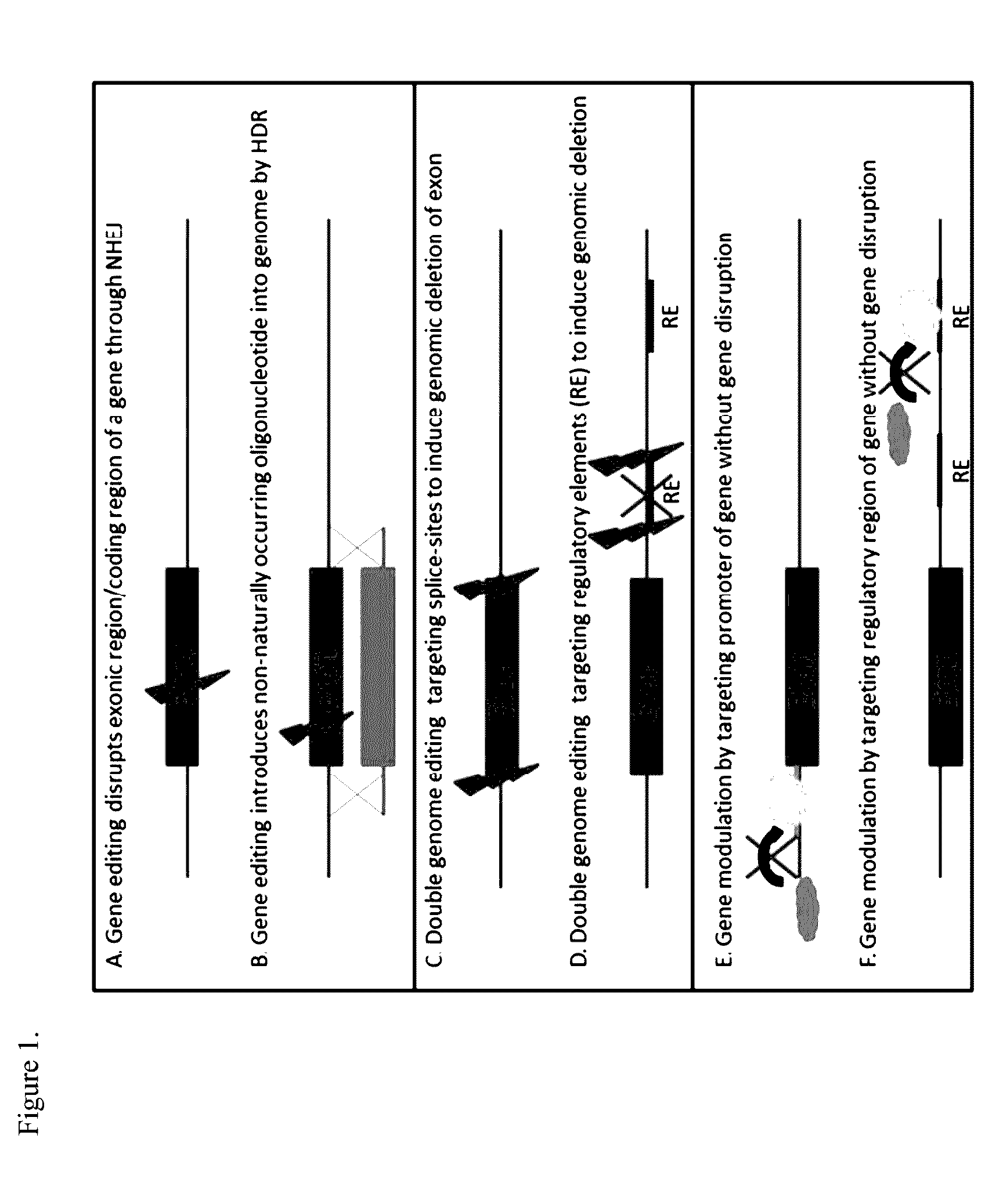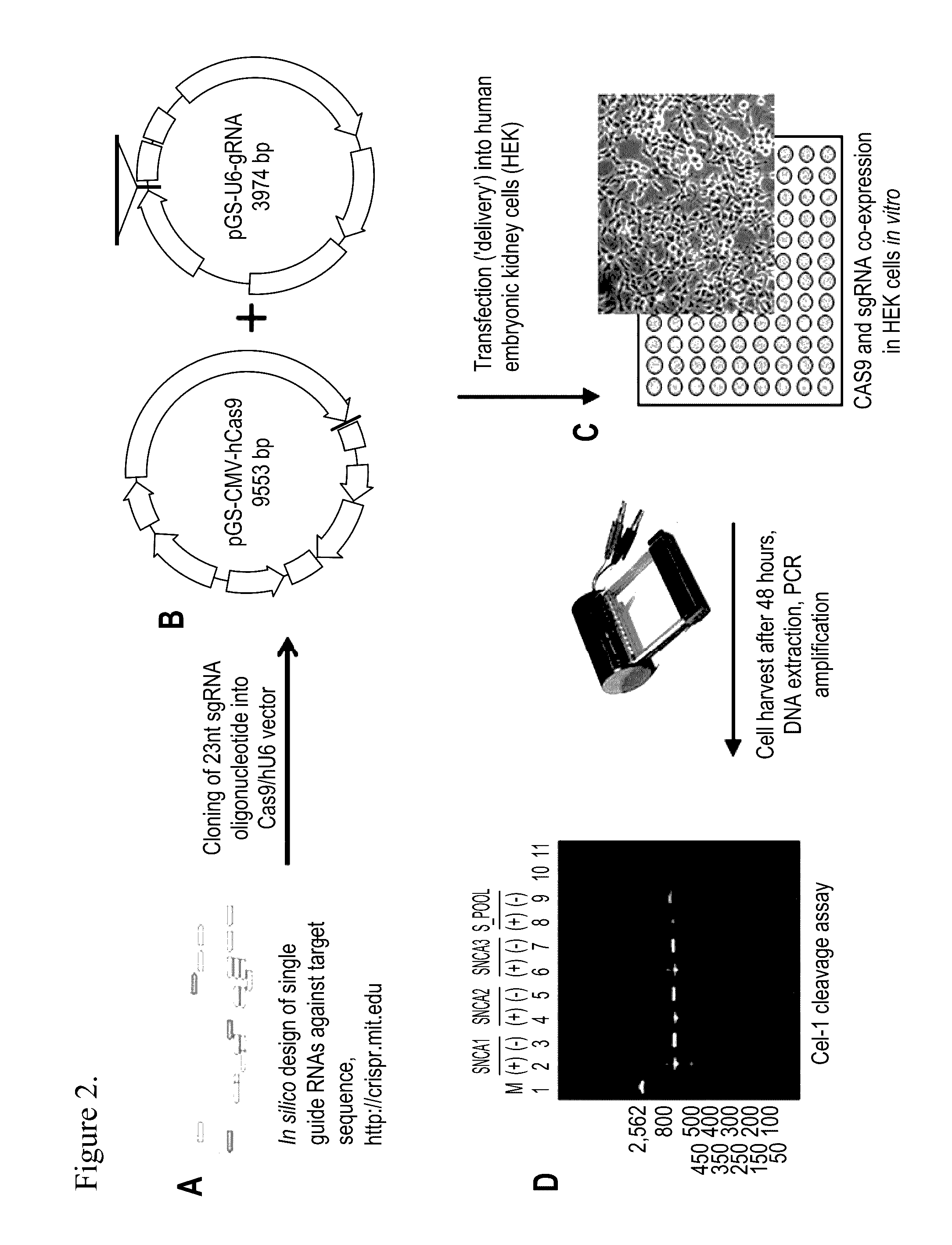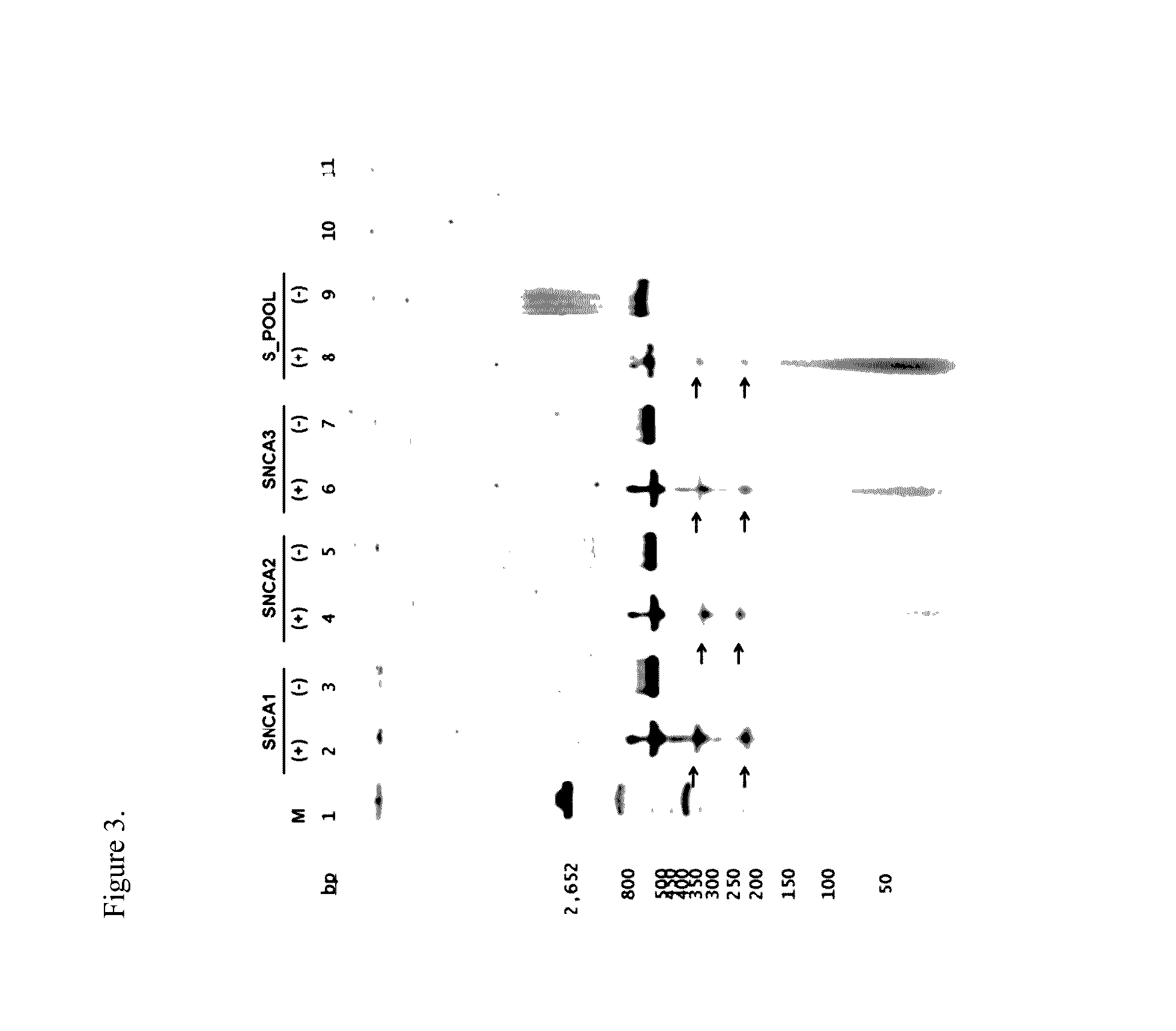Compositions and methods for treatment of neurogenerative diseases
a neurodegenerative disease and composition technology, applied in the field of compositions and methods for treating neurodegenerative diseases, can solve the problems of knock-out alleles of genes, dysfunctional proteins, and slow progressive debilitating disease with no known current cur
- Summary
- Abstract
- Description
- Claims
- Application Information
AI Technical Summary
Benefits of technology
Problems solved by technology
Method used
Image
Examples
example 1
Neurodegenerative Targets Disease and Associated Gene
[0102]The compositions and methods disclosed have been described with respect to at least one gene, such as SNCA or alpha-synuclein gene (SNCA: synuclein, alpha (non A4 component of amyloid precursor) chromosomal location 4q21.3-q22), and at least one disorder, Parkinson's disease (Online Mendelian Inheritance in Man, OMIM #607060). However, others skilled in the art will appreciate that the methods of gene editing and modification and delivery of the constructs described herein are generally applicable to those neurodegenerative diseases in which over expression or decreased expression of the noimal wildtype sequence or specific genetic variants causes neurodegenerative disease or syndromes The neurodegenerative diseases and genes are listed in Tables 1 and 2.
[0103]An overview of the different targeting strategies is visualized in FIG. 1. Gene editing or genome editing with engineered nucleases relies on the introduction of doubl...
example 2
[0105]Several publicly available bioinformatics tools are used to design oligonucleotides for small guide RNAs.
[0106]The in silico design workflow requires input the target sequence (e.g. SNCA coding region, Human Genome Build hg19, length <250 bp) into the CRISPR Design Tool with the following settings: 1) “other region (25-500 nt)” for sequence type and 2) “human (hg19)” for target genome. The CRISPR Design Tool output list of sgRNA designs is ranked according to their “quality scores”. Selection criteria are: 1) high quality guides or / and 2) a variety of sgRNA designs that are far apart from one another and on both strands (+ / −) for non-coding ECRs. The candidate designs have to be subsequently assessed for off-target analysis.
[0107]To identify the sgRNA sequence for the SNCA gene, the consensus mRNA was used for the SNCA gene, transcript variant 1 (longest isoform, containing all 6 exons) NM_000345.3 (Genome Reference Assembly hg19 / GRCh37) and indivi...
example 3
Gene Regulation to Downregulate Alpha-Synuclein
[0111]Gene regulation can be achieved by a mutant dCas9 construct, a catalytically inactive programmable RNA-dependent DNA binding protein, fused to VP16 tetramer activation domain or a Krueppel-associated box (KRAB) repressor domain. Twelve regulatory domains were identified within the SNCA gene (Sterling et al., 2014) (FIGS. 5-7) that can be targeted similar to the guide RNAs within the exons of the SNCA and MAPT gene. By mutant CRISPR / dCas9 binding to specific regulatory sites fused to a repressor domain, alpha-synuclein expression can be down regulated.
[0112]The catalytically dead Cas-9 (dCas9) lacking endonuclease from type II CRISPR system can control gene expression when co-expressed with sgRNA. The dCas9 generates a DNA recognition complex that does not cleave the DNA, but that can specifically interfere with transcriptional elongation, RNA polymerase binding, and / or transcription factor binding (Jinek et al., 2012; Qi et al., 2...
PUM
| Property | Measurement | Unit |
|---|---|---|
| Mass | aaaaa | aaaaa |
| Mass | aaaaa | aaaaa |
| Mass | aaaaa | aaaaa |
Abstract
Description
Claims
Application Information
 Login to View More
Login to View More - R&D
- Intellectual Property
- Life Sciences
- Materials
- Tech Scout
- Unparalleled Data Quality
- Higher Quality Content
- 60% Fewer Hallucinations
Browse by: Latest US Patents, China's latest patents, Technical Efficacy Thesaurus, Application Domain, Technology Topic, Popular Technical Reports.
© 2025 PatSnap. All rights reserved.Legal|Privacy policy|Modern Slavery Act Transparency Statement|Sitemap|About US| Contact US: help@patsnap.com



